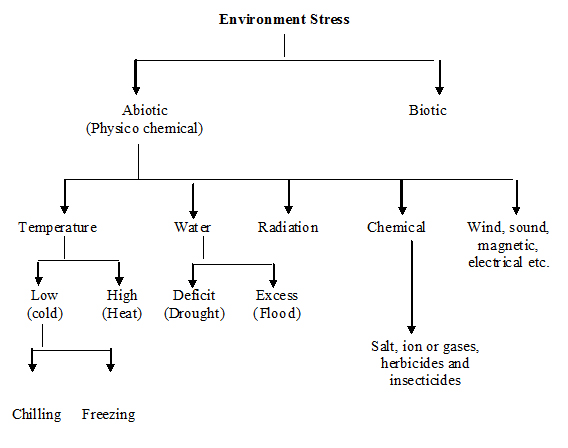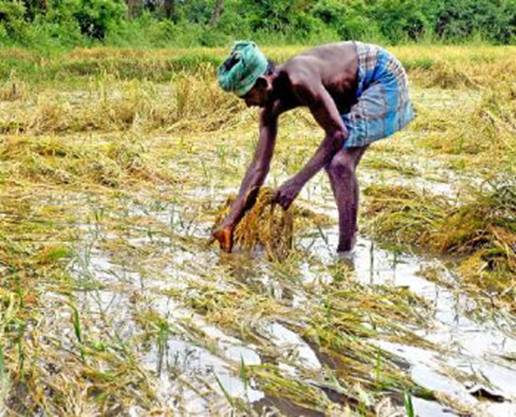
|
||||
Stress Management :: Drought |
||||
About Abiotic stress Environmental stress The occurrence of unfavorable environmental factors such as moisture deficit / excess, high radiation, low and high temperature, salinity of water and soil, nutrient deficiency or toxicity and pollution of atmosphere, soil and water are likely to affect the crop growth in terms of morphology (plant size, architecture, malformation of plant organs, growth (height, volume, weight), physiological and metabolic processes and yield of crop plants. Stress and strain Any environmental factor potentially unfavorable to plant is termed as stress. The effect of stress on plant condition is called strain. According to Newton's law of motion, a force is always accompanied by a counterforce, for an action there is always equal and opposite reaction. Stress is the action and whereas strain is the reaction. A body of a plant subjected to stress is in a state of strain. Strain may be elastic or plastic strain. Elastic strain Up to a point, a strain may be completely reversible and when the stress is relieved, the plant becomes normal. Plastic strain Beyond the point of elastic strain, the strain may be partially reversible or partially irreversible, which is called plastic strain or permanent set. Biological stress and strain Biological stresses differ from mechanical stresses. The plants are able to erect barriers between the body and environmental stress by expending energy. Biological stresses always cause certain amount of injury which is irreversible and is a plastic strain. Hence, a biological stress is defined as any environmental factor capable of inducing a potentially injurious strain in living organisms. The living organism may show physical strain e.g. cessation of cytoplasmic streaming or a chemical strain e.g. a shift in metabolism. If the strain is severe, the organism may suffer a permanent set i.e. injury or death. Stress resistance Ability of the plants to survive under adverse environmental condition is termed as stress resistance. The stress resistance of biological organisms is of two main types. Elastic resistance Ability of the organism to prevent reversible or elastic strain (physical or chemical change) when exposed to a specific stress. Plastic resistance Plastic resistance is the ability of an organism to prevent irreversible or plastic strain. The term resistance to environmental stress has been used for plastic resistance and elastic resistance is not clearly recognized.
Zero Stress This is the level of exposure of plants to environmental factors that leads to neither injury nor reduction in growth and yield of crops. WATER STRESS The availability of water to the plants depends on the periodicity, degree of rainfall, sub-soil water status, water slope etc. Water stress may occur either due to water shortage or due to excess of water. The former is more common in India and in arid and semi-arid regions and causes Drought, while the latter is caused by the Flood and Water logging resulting in O2 insufficiency to the roots.
What is drought? Physiologically, it is explained as the reduction in leaf water potential which occurs due to excess transpiration than the water absorption. That is, when water absorption lag behind transpiration, water deficit develops. It is also defined as, “deficiency or dearth of water severe enough to check the plant growth”. Other factors causing drought: Besides the deficiency of soil moisture, high temperature, low relative humidity, fast wind etc. aggravate the adverse effect of drought.
|
||||
| © All Rights Reserved. TNAU 2008-2024 |
||||

